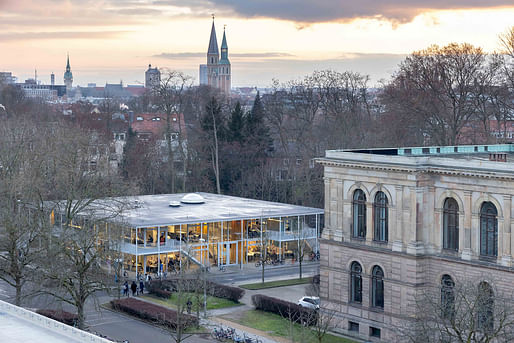

A lightweight university study centre designed to be easily disassembled has won the prize for the best building in Europe. Longevity, permanence and a sense of immutability might be the ambition of most architects, but Gustav Düsing and Max Hacke would be delighted to see their building adapted and reconfigured, or ultimately dismantled and moved somewhere else altogether. — Oliver Wainwright, The Guardian
Wainwright reflects on the "impossibly slender" pavilion which was revealed as the winner of the 2024 EU Mies van der Rohe Award last week in an article that also includes the perspectives of the pavilion's architects, Gustav Düsing and Max Hacke.

Located on the campus of the Technical University of Braunschweig, Germany, the pavilion has been designed to allow for variations of student activities within a flexible layout, described by the award organizers as a "counter-model to spaces of hierarchical knowledge transfer."
Another winning aspect is the hybrid structure's ability to be disassembled and remounted. Individual components are capable of reuse in line with a principle called the "future material depot," which contributes to its role in the circular economy.
1 Comment
Wonderful building. Contrast with today's other stories featuring the antics of Steven Holl and Heatherwick.
Block this user
Are you sure you want to block this user and hide all related comments throughout the site?
Archinect
This is your first comment on Archinect. Your comment will be visible once approved.